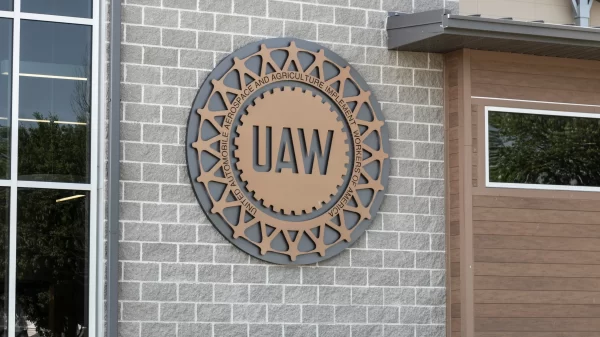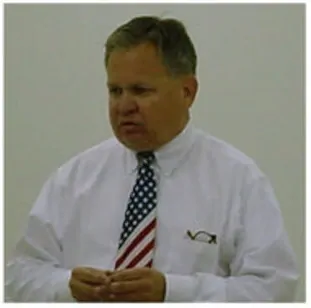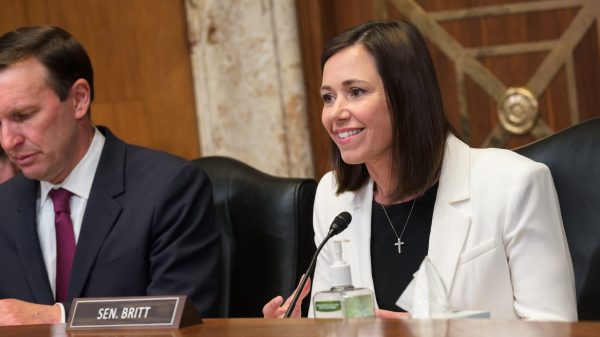Brandon Moseley
Alabama Political Reporter
Alabama Auditor Jim Zeigler (R) has announced that he will visit the City of Eufaula on Friday, Jan. 30 to personal inspect alleged damage to the North Eufaula Avenue historic median by the Alabama Department of Transportation (ALDOT).
ALDOT is working on the median in order to create a four-lane US 431, despite objections from the adjoining property owners and the supporters of the Nationally renowned Eufaula historic district.
State Auditor Zeigler said in a written statement, “This project is costing State taxpayers about $1.3 million unnecessarily. There was federal money available to completely fund this project, but it would have required an impact study of effects on the community. To avoid local citizen input, the state is flushing $1.3 million down the toilet.”
Zeigler said that, “Money had been spent over years developing plans for a by-pass. That money is being thrown away since someone with an agenda decided to endanger the historical district.”
Zeigler said, “This four-lane on North Eufaula Avenue will only provide a small amount of traffic improvement. The Eufaula by-pass will eventually be needed anyway, so we taxpayers are having to pay for two projects when the by-pass alone would have handled the traffic.”
State auditor Jim Zeigler will begin the inspection tour at 1:45 pm on Friday at Shorter Mansion- Eufaula Heritage Assoc., 340 N. Eufaula Ave., Eufaula, AL. Zeigler is inviting news media and journalist to accompany him on the inspection.
Zeigler says he is concerned with damage to the over-hanging trees called “the canopy,” the roots of the trees in the median, and three feet on both sides of the median being scraped for paving.
The Eufaula City Council initially opposed the road widening project; but after Zeigler uncovered evidence that the median actually belonged to the City of Eufaula rather than ALDOT the City Council held a hurried called council meeting on the evening of Jan. 7 and approved the widening project in a 3 to 2 vote.
Zeigler said, “The State offered the city $300,000 in road work in exchange for their dropping opposition to the paving on the historic median. The city council sold out the historic district for thirty pieces of silver.”
Prior to his being sworn in as State Auditor, Zeigler filed suit on behalf of three owners of historic homes on North Eufaula Avenue seeking an injunction to block the state from taking a six-foot wide strip of a historic median to four-lane the now two-lane avenue.
Contractors for the State began preparations to pave in the median on January 5th.
Jim Zeigler told the Alabama Political Reporter that the Alabama Department of Transportation is pushing ahead on this project to four-lane six blocks of Highway 431, because they don’t want any review of the project.
Zeigler said that the state could have requested federal funding for this project but instead are using state dollars because the federal government would have required environmental impact and historical impact studies of the project that they knew this project would never pass any sort of review.
Zeigler said, “We have a $170 million shortfall in the General Fund and they are wasting over $1 million on this project. This is exactly the sort of waste I am going to expose as State Auditor.”
A number of large home were built on Eufaula’s historic First Avenue beginning well before the Civil War. Some of the homes were built a human lifetime before the first automobile appeared. Tourists from across the South and beyond come to see the historic homes and enjoy the fishing and wildlife at the nearby lakes, state park, and national wildlife refuge.
ALDOT has spent decades working on four-laning segments of U.S. highway 431 that serves rural east Alabama, but is primarily used a conduit for tourists going to Panama City and Destin in Florida. A portion of First Avenue in north Eufaula with it’s stately Antebellum and Victorian homes were bypassed by those most recent road improvements remaining relatively unchanged for decades.
ALDOT officials argue that they must widen that less than one mile of road because it slows motorists and is a traffic bottleneck. Homeowners argue that widening the road will cost the scenic stretch dozens of trees and will hurt the aesthetics of the neighborhood. The entire three blocks is listed on the National Register of Historic Places. Eufaula has the largest historic district in Southeast Alabama and includes over 700 homes and buildings many of them on First Avenue. Residents argue that the state could simply build a bypass around the center of Eufaula. ALDOT argues that that would cost too much and that widening the road by ripping out much of the tree lined median is the most cost effective solution.
Zeigler is a former Public Service Commissioner who has spent decades on the Alabama political scene. Zeigler is an attorney who specialized in eldercare issues before becoming Alabama’s State Auditor. The Constitutional office of Auditor was weakened substantially in the 1930s when the actual auditing function of the office was moved to the Examiner of Public Accounts (strangely controlled by the State Legislature). The State Auditor’s office primarily is responsible for maintaining an inventory of all the State’s physical assets: land, buildings, vehicles, computers, office equipment, guns, tools, equipment, etc.























































